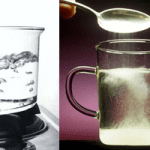Extraction Economics: Efficiency Pays Dividends
In a previous blog (Extraction Scale-up: A Matter of Dollars and Sense), I outlined the many factors involved in successfully scaling up a cannabis extraction process from grams to kilograms of oil per day. Facility size, utility costs, material storage requirements, hardware investment, consumable costs, skilled labor and waste disposal are just some of the many considerations that must be weighed and balanced to achieve the most cost-effective process. Most of these costs are fixed and easily dropped into a cost and profitability analysis.
However, what impact does extraction efficiency have on scale-up economics? For the sake of this argument, let’s say that extraction efficiency refers to the yield of oil extracted from the raw cannabis stock. Yield, in this example, doesn’t take into account the amount of THC, CBD or other desirable components actually contained in the starting materials. Garret Nicodemus presents a more refined definition of extraction efficiency in his blog post in New Cannabis Ventures.
For our purposes here, let’s take a look at the impact of a swing of just a few percentage points in overall yield can have on profitability. Cannabis Business Times published an article with a reasonable fiscal model so let’s use their math.
In their example, they assume that the wholesale price of the high-quality outdoor flower is $700 per pound. The second assumption is that two potential outcomes of yield exist from the extraction and refinement process (i.e. 10 percent and 15 percent of dried flower weight). The final assumption is the potential wholesale prices for high-quality refined oils, estimated at two potential levels of $20 and $25 per gram. At 15-percent extraction yield, an extracted pound would wholesale for $1,360.80 (at $20/g) and $1,701 (at $25/g). At 10-percent extraction yield, the wholesale price for a pound would be $907.20 (at $20/g) and $1,134 (at $25/g).
Now, let’s see what those numbers look like when processing 1 ton of material at the same yield of 10 percent and 15 percent (8 – 10% yield is probably more realistic). Assuming the same wholesale pricing structure, an extracted ton of material at 15% yield would wholesale for $2.7 million ($20/gram) and $3.4 million (at $25/gram). At 10 percent extraction yield, the wholesale price for a ton would be $1.8 million ($20/gram) and $2.2 million ($25/gram).
Using this equation, a 5% change in extraction yield can affect nearly a million dollars per ton of starting material. And, if you are building an extraction facility expected to process a similar amount of material per day, those numbers are significant. Granted, I presented a fictional example with broad estimates and assumptions, and recognize that there are many additional factors that impact the cost structure. However, the example does demonstrate the importance of extraction efficiency and yield in the overall economics of successful cannabis production.
Recent Posts





